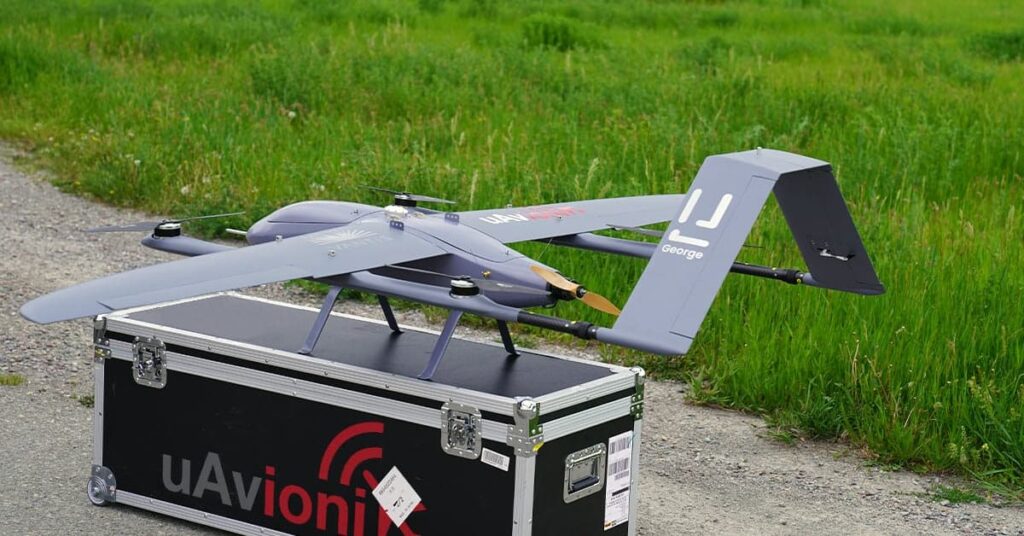

uAvionix has conducted a technology demonstration flight with a VTOL UAS (unmanned aerial system) that combined the flight control capabilities of the company’s new George autopilot with the latest iteration of SkyLine, uAvionix’s purpose-built managed C2 infrastructure.
The 40-mile demonstration flight was conducted at the Northern Plains UAS Test Site (NP UAS TS) in Grand Forks, North Dakota, using three terrestrial skyStation Ground Radio Systems (GRS). The platform used was the custom uAvionix internal test eVTOL platform, autonomously flown by the George autopilot.
George is a National Defense Authorization Act (NDAA) compliant autopilot that leverages the Cube core from CubePilot – combining open-source innovation with Design Assurance Level (DAL) C hardware and safety and sensor monitoring for customers seeking Type Certification (TC) and safety case evidence for high-risk operations such as Beyond Visual Line of Sight (BVLOS).
In addition to hardening open-source hardware, George sets out to simplify the integration and compatibility complexities that come with enterprise autopilots and flight avionics. Compatible with the entire uAvionix product lineup, including Low-SWaP Certified Transponders, purpose-built C2 Radios, ADS-B Detect and Avoid solutions, and the soon-to-be certified truFYX GPS, George is an essential component for a seamless UAS architecture that can serve both civilian and military applications.
This most recent North Dakota flight demonstration differed from previous flights. This was the first public demonstration of three SkyStation terrestrial ground radio locations managed by SkyLine, uAvionix’s purpose-built command and control network for UAS, which powered the fully autonomous 40-mile BVLOS flight.
Each ground radio was monitored and coordinated through the uAvionix cloud-based SkyLine managed C2 service. SkyLine monitors the connectivity, signal strength, and quality from microLink, the redundant Airborne Radio System onboard the eVTOL, to manage make-before-break seamless transitions between ground radio locations. Engineers onsite, along with dozens around the world, watched as the SkyLine system determined which of the three ground stations provided the most robust connection completely autonomously and independent of the pilot in command.
uAvionix sees SkyLine as a key component to the future of BVLOS flight for UAS. SkyLine doesn’t rely on consumer-grade networks but rather is its own purpose-built airborne network, partitioned to provide not just quality of service, but integrity of service. With a dense ground network of skyStations and SkyLine managing the network integrity and aircraft, it opens up a wide variety of use cases for safe, trusted, large-scale fleet management, including package delivery, inspections, Urban Air Mobility, and more.
The SkyLine system is currently being deployed as a component of the Vantis State-Wide North Dakota BVLOS network, the New Mexico UAS Test Site, and the AirMarket led Energy UTM trials in Canada.
Paul Beard, uAvionix CEO and inventor of the Spektrum Radio, which has become the digital spread spectrum standard for the RC industry, commented: “Many in the industry are trying to shoehorn radio networking standards which were designed for bulk data transmissions – not for deterministic flight critical applications. In the end, this results in lower performance and uncertainty. We set out to design a purpose-built radio, network, and architecture that blends modern digital radio technology with aviation standards to get the most performance out of a robust system in order to close on the safety case.”







Related Posts
New Drone Fires Thales Missile in Unmanned Air Combat Milestone
UAS Startup Accelerator Awards 3M in Funding
US Navy Orders Unmanned Tactical Resupply Aircraft